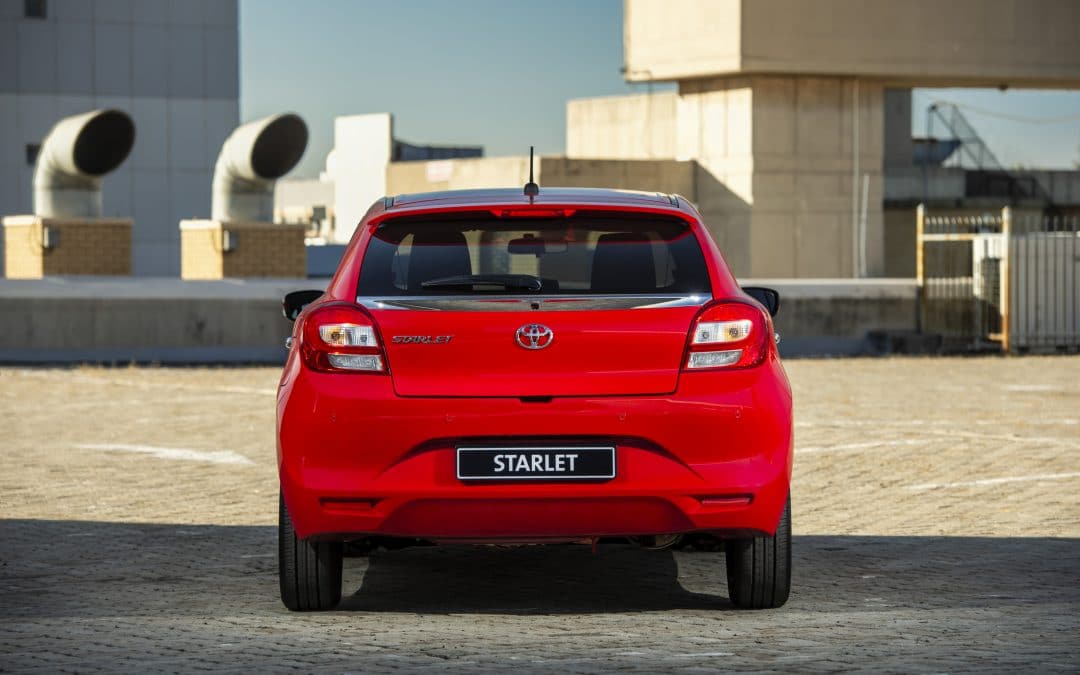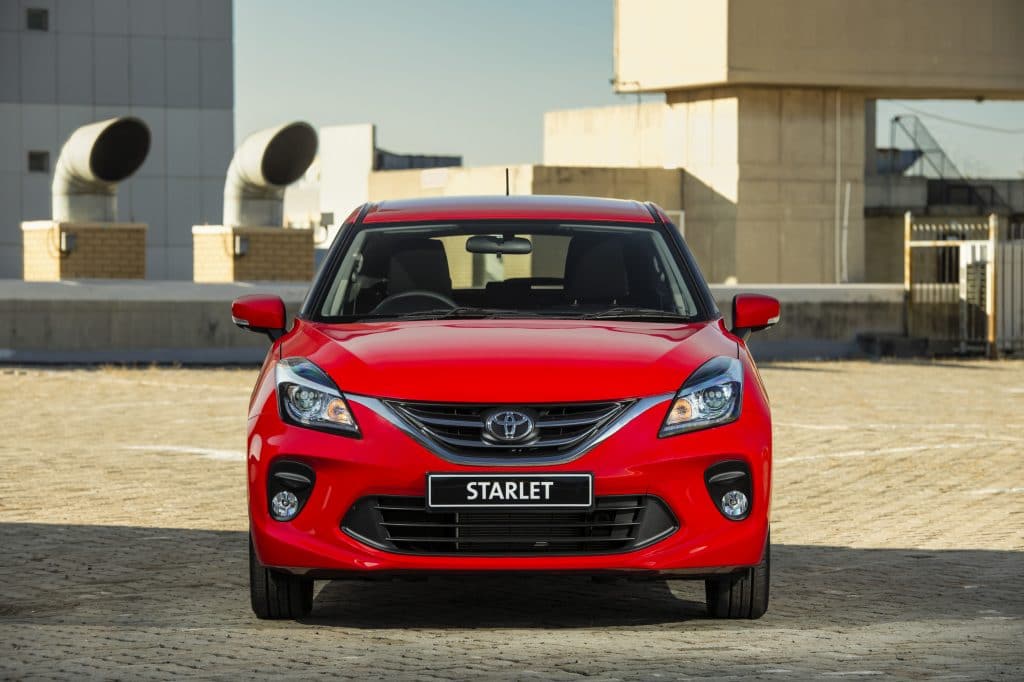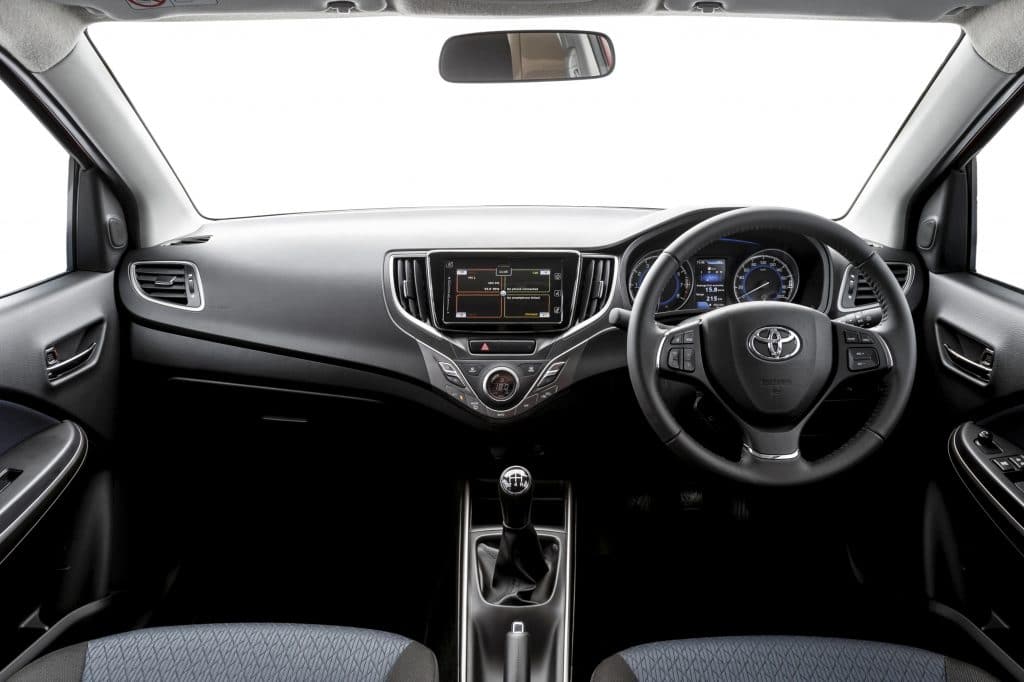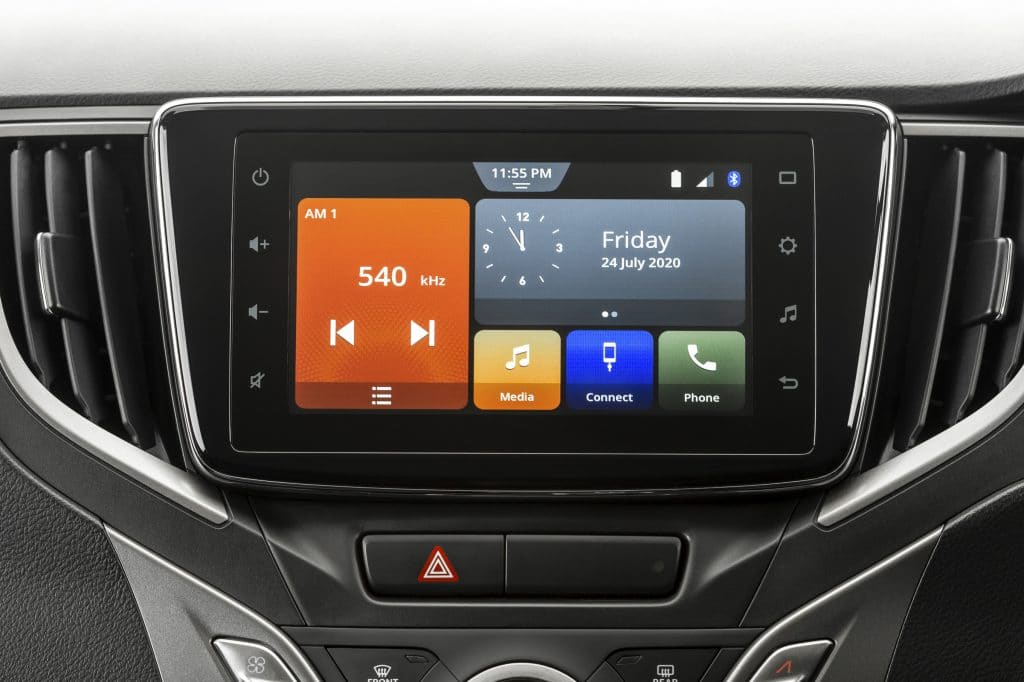Joint ventures, mergers, acquisitions and cross-brand partnerships – these are the driving forces of an ever-increasing global market.
The automotive sector is no stranger to this, with multi-brand partnerships having been around for many decades with vehicles (and their components) being built all across the world. As a result of an ever-expanding market, more demanding customers and economic emancipation, automakers are increasingly being required to adapt and innovate.
On 28 August 2019, Toyota and Suzuki announced a formal alliance between the two companies, in order to leverage each other’s strengths and compete in the evolving global vehicle market. Toyota’s expertise in Hybrid technology and autonomous driving would be of benefit to Suzuki, while Toyota would get access to compact vehicles, a Suzuki strength. A mutually-beneficial alliance was born.
The Toyota Starlet
The first product to come out of this brand alliance and make it to our shores is the Toyota Starlet. The Starlet name dates back to 1973, and has adorned Toyota’s sub-compact hatchback in the Japanese Domestic Market for five generations (ending in 1999). Staying true to the ethos of being a compact, efficient and value-focused product, the newcomer proudly revives the Starlet badge.
The Positioning
The sub-B segment accounts for the second highest share of passenger vehicle sales in South Africa and is a fiercely competitive territory. The Starlet replaces Etios in Toyota’s line-up – a vehicle that captured an average 22% share of the sub-B segment over its lifespan.
Starlet builds on the core strengths of Etios – good performance, fuel efficiency and affordable pricing – then amplifies the product offering with a modern exterior design, spacious interior and enhanced specification levels.
Modern Exterior
The exterior design follows a classic hatchback profile, with a short, downward-sloping nose and rounded-off rear hatch. A v-shaped front grille (in Toyota-specific finishing) with centrally-mounted Toyota insignia, are joined by two vertically-arranged headlamps with chrome inlay. A trapezoidal lower air dam is flanked by stylised fog lamp housings (where fitted).
The side profile features contour-following upper and lower crease lines – which create a sense of motion – topped off with colour-coded exterior mirrors. Prominent wheel arches give the Starlet a sure-footed stance.
The rear design centres around the large LED tail lamps with red and translucent accents. These are joined by a stylish chrome garnish strip and trapezoidal indent in the lower bumper section. The overall result is a harmoniously handsome design.
Interior Design
The interior layout prioritises spaciousness and ergonomics without compromising on flair. The centre ‘hang-down’ section of the dashboard neatly groups the ventilation, infotainment and climate-control switchgear. Contour lines create a feeling of unison with the exterior design. The driver is greeted by a bright and easy-to-read instrument cluster with on-centre Multi-Information Display (MID) and dual analogue gauges.
A chunky three-spoke steering wheel incorporates steering switches and cruise control (where equipped).
Running Gear
The foundation of Starlet is Suzuki’s TECT platform, which utilises high-tensile steel in critical areas as well as energy absorption channels – to produce a strong, safe and lightweight chassis. A traditional McPherson strut front-suspension design is joined by a torsion-beam rear axle. The torsion-beam layout provides enhanced packaging and contributes to Starlet’s spaciousness.
The Xi model is equipped with 15”-steel wheels shod with 175-65R15 tyres and a space- saver spare wheel. Xs and Xr variants feature stylish turbine-shaped 16”-alloy wheels with 185-55R16 rubber.
Engine & Performance
Powering the Starlet is a 1.4-litre DOHC four-cylinder engine. Featuring Variable Valve Timing (VVT) and a tumble-flow intake manifold, the engine exhibits a rev-happy character and makes light work of the daily commute. Power output is pegged at 68kW @ 6000 rpm with 130Nm of torque @ 4200 rpm.
Two transmission choices are on offer, a 5-speed manual and 4-speed automatic, all driving the front wheels. The obligatory 0-100km/h dash is dispatched in 10.9s for the manual and 11.6s for the auto variant.
Low fuel consumption is a key feature, with the fuel index registering between 5.1 and 5.4 l/100 km depending on variant. A 37-litre fuel tank provides an effective range of over 700km on a single tank.
Towing capacity weighs in at 400kg unbraked and 1000kg braked.
Grade Strategy & Specification
A three-grade strategy has been adopted using the familiar Xi, Xs and Xr symbols used across Toyota’s other passenger-car ranges. Despite serving as the entry point to the Starlet range, the Xi model is generously specced, featuring air-conditioning, electric power steering, dual 12-volt power outlets, electric windows, tilt-adjustable steering column, 60/40 split rear seats, power-adjustable side mirrors and remote central locking. The Xs model adds alloy wheels to the ensemble.
The flagship Xr models receive the full package, comprising chrome door handles and side mouldings, rear privacy glass, front fog lamps, LED + Projector headlamps with daytime running lights (DRL), side-mirror mounted indicators and a roof spoiler. Moving to the interior, the spec level is amped up courtesy of a digital speedometer with colour MID, leather steering wheel with telescopic adjustment, park distance control (PDC), reverse camera, climate control and push-start operation. Cruise control is also provided, operated via steering-wheel-mounted switches.
Audio & Infotainment
Xi and Xs models feature a double-DIN audio system with CD/Bluetooth/USB/Aux functionality, playing through 6-speakers. Xr models offer a feature-rich touchscreen audio system complete with Android Auto and Apple CarPlay integration for navigation, telephony and music-streaming services. Traditional USB, Bluetooth and MP3/Aux compatibility remains – offering the user a wide variety of in-vehicle entertainment sources. Reverse camera monitoring is also embedded within the infotainment system.
All Starlet models are also equipped with the Toyota Connect telematics system which includes an in-car Wi-Fi hotspot and complimentary 15Gb data. Once linked to their profile, customers can manage their vehicle via the MyToyota App. This intuitive app allows on-demand service bookings, vehicle information and history, tracking data as well as Toyota Connect data recharge services and much more.
Safety & Security
All Starlet models come generously equipped with safety and security equipment which include active electronic aids such as ABS, EBD, Brake Assist (BA) and Vehicle Stability Control (VSC). Automatic transmission models also include Hill Assist Control (HAC).
Xi and Xs models are fitted with Driver and Passenger (D+P) airbags, while the Xr variants also feature Curtain and Side airbags (C+S). Two ISOFIX points and a security system are provided across the board.
Model Line-up & Pricing
Starlet 1.4 Xi MT – R204 900
Starlet 1.4 Xs MT – R215 200
Starlet 1.4 Xs AT – R235 700
Starlet 1.4 Xr MT – R258 500
Starlet 1.4 Xr AT – R272 500
Warranty & Maintenance
All Starlet models are sold with a 3-services or 45 000 km service plan – with 15 000 km service intervals. A 3-year or 100 000 km warranty is also provided. Customers can purchase an additional service plan and warranty extensions from their local Toyota dealer – and they benefit from the biggest dealer network in the country (over 220).





